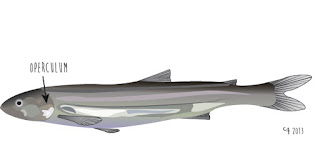This week, I watched the movie “Elf” to get into the
Christmas spirit. Among the highlights:
- “You stink. You don’t smell like Santa. You smell like beef and cheese."
- “We elves try to stick to the four main food groups: candy, candy canes, candy corns and syrup.”
- "Have you seen these toilets? They're GINORMOUS!"
 Buddy the Elf finds out he is a human living amongst Santa's elves, explaining why he always felt he just didn't belong. Buddy realizes he must set out to find out who he really is, and that means finding his birth father. As Buddy leaves the North Pole to find his dad in New
York, he sets adrift on an iceberg.
As he pushes off, a Narwhal surfaces.
Buddy the Elf finds out he is a human living amongst Santa's elves, explaining why he always felt he just didn't belong. Buddy realizes he must set out to find out who he really is, and that means finding his birth father. As Buddy leaves the North Pole to find his dad in New
York, he sets adrift on an iceberg.
As he pushes off, a Narwhal surfaces.
When I saw this scene, I realized I didn’t know what the
heck a Narwhal was. I knew it must be a marine mammal, a kind of whale. But a
unicorn whale? That can’t be a thing.
A quick internet search showed me that they are real.
Narwhals and Beluga Whales are the only extant species within the family
Monodontidae- latin for “singular toothed.” They live in the Arctic Ocean (hats
off to the writers of “Elf.” They got their Narwhal facts straight.) They were
originally described by good ole’ Linneaus and get their common name from the
Norse word for “corpse.” Apparently, their grey, speckled skin reminded people
of dead sailor corpses. Romantic, no?
Let’s talk about that horn. Really, that horn is what made
me wonder if Narwhals were real. I mean, it’s not uncommon to see mammals with
paired, keratinized outgrowths like horns and antlers. And the rhinoceros even
has a singular horn on its snout. But a marine mammal? How is that efficient
when swimming? In a watery, swimming environment, how would a singular horn
function? Male to male combat would be hard to imagine, as sheep and deer are
on ground and can brace themselves against impact from one another.
Come to find out, the “horn” is no horn at all. It is a
tooth, or a tusk, that grows through the whale’s lip. And only the males have
it. It grows from the left side of the upper jaw, while the right canine tooth
remains an undeveloped nub. (Although, it is worth mentioning that 0.2% of male
Narwhals develop both the left and right tusk). And to add weirdness to an
already weird situation, the tusk is highly enervated. They can feel things
with it.
 |
| Narwhals tusking. (wikicommons) |
Naturalists have debated for a long time what purpose the
Narwhal’s tooth serves. They have rarely been observed fighting each other with
the tusks, nor attacking other species or using it to break sea ice. They have
been seen participating in a group activity known as “tusking,” where males get
together and rub tusks.
It is largely held that the tusk is a secondary sexual
characteristic, meaning it serves little physiological purpose and exists
almost completely to attract mates and establish mating rights. Kind of like
body hair on human men. It exists as a secondary sexual characteristic- not
really that useful, but attractive to us ladies on a primal level.
Males with big tusks get preferred mating rights with the
female whales (fewhales! new word.) of their choice. And the tusking thing
probably exists to establish hierarchy amongst males.
I hope this post weirded you out as much as it did me.
Narwhals, though fascinating and intricately evolved, make me sort of
uncomfortable.
But, if they are as nice as the one in Elf, then maybe they
aren’t so bad.
Hope you find your dad.



























